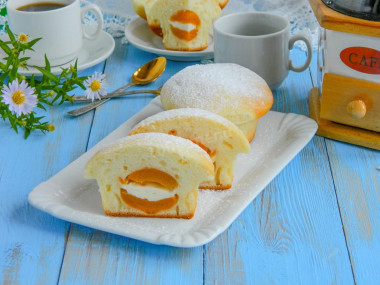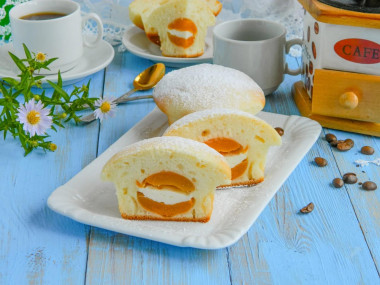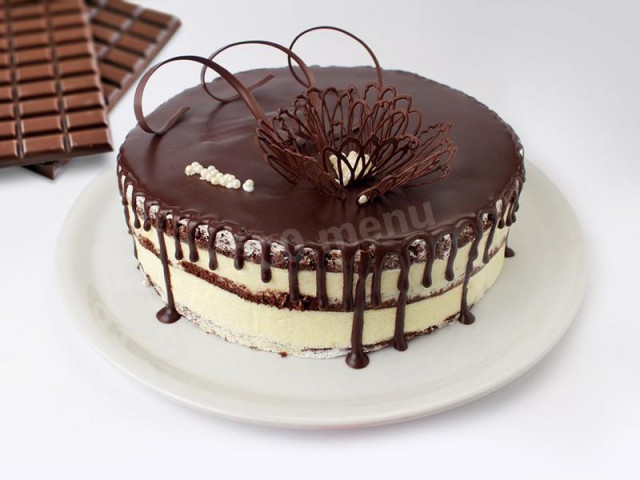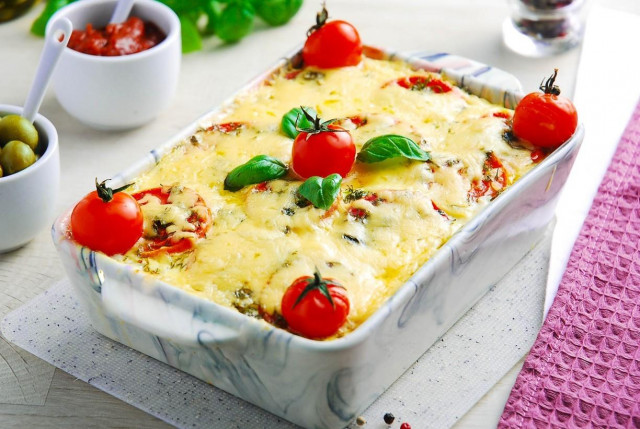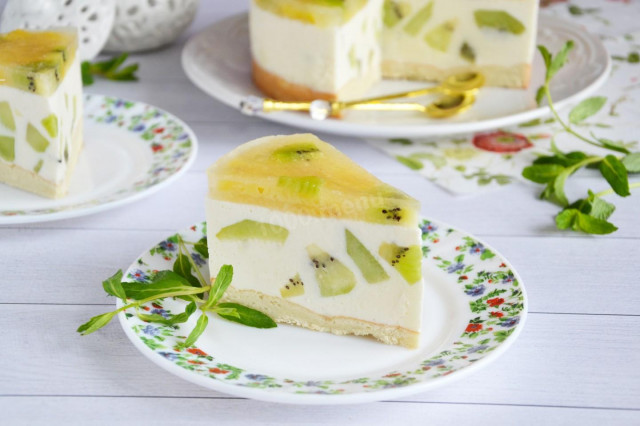Composition / ingredients
Step-by-step cooking
Step 1:
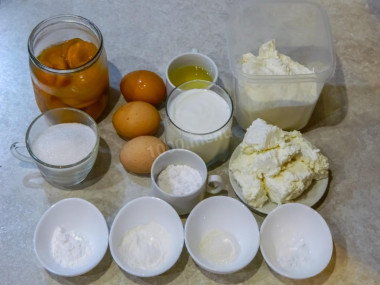
How to make cupcakes with filling in molds? Prepare all the necessary ingredients for making cupcakes. Eggs for the dough take C1 or C0, for the filling - C2. Choose a good cottage cheese, natural, with a high percentage of fat content. Remove the eggs and yogurt from the refrigerator for 1-1.5 hours. In order for the dough to be successful, they must be at room temperature. Choose small apricots. Canned apricots should be halves.
Step 2:
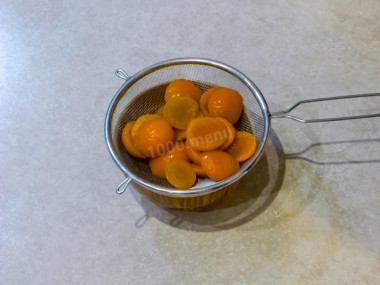
Start by making the filling. Apricots can be used fresh or canned. Fresh ones need to be washed, dried, carefully divided into two halves and remove the bone. With canned (I had just such), you need to drain the syrup, select 12 identical halves and dry them, putting them on a napkin or paper towels.
Step 3:
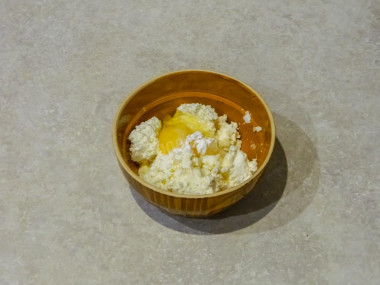
In a separate container, mix cottage cheese, powdered sugar, egg and starch. Do not forget that the eggs need to be pre-washed with special tools.
Step 4:
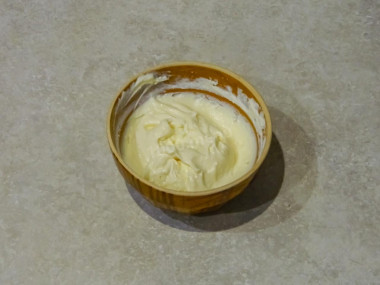
Using an immersion blender, turn the filling into a homogeneous mass. It should not turn out liquid, otherwise it will leak out and the smile will turn ugly.
Step 5:

Turn on the oven to preheat to 180 degrees. Take a deep bowl in which it will be convenient to mix dry and liquid ingredients for the dough. Wash the eggs and break them into a bowl. Add granulated sugar and vanilla sugar, salt. Whisk with a mixer or whisk. Be sure to beat it up to a light fluffy foam so that the cupcakes turn out airy and lush. Adding salt improves the taste of cupcakes and simplifies the process of whipping eggs.
Step 6:

Add yogurt and vegetable oil, mix until smooth with a spoon or spatula.
Step 7:
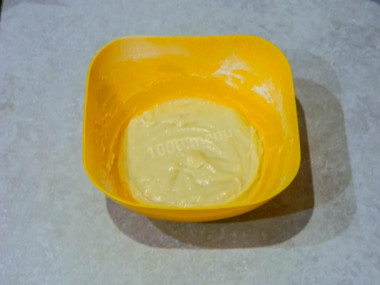
Sift flour into a separate container to sift out small debris and the dough is saturated with oxygen. Add the baking powder to the flour and mix so that it spreads evenly over the flour. Gradually add flour to the liquid component of the dough and mix with a spoon or spatula gently in one direction so as not to disturb the air structure of the beaten eggs. Add flour until the dough has the consistency of very thick sour cream, so that the filling does not "sink" in it.
Step 8:
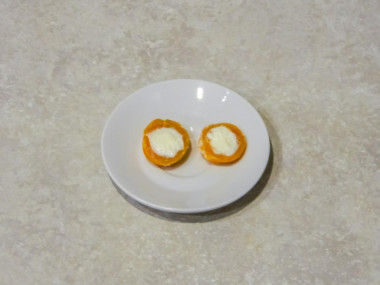
Fill the apricot halves with curd filling so that the joints of the apricot walls remain clean. So a smile made of apricots will turn out neat and beautiful.
Step 9:
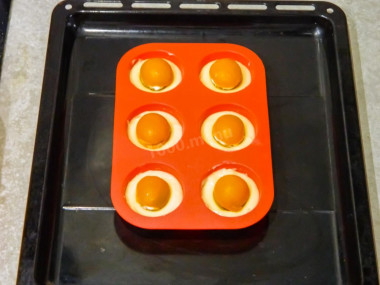
Use cupcake molds for baking. If they are silicone, like mine, or special paper ones, they do not need to be lubricated. If made of a different material, lubricate with vegetable or butter. Fill them half full. In the middle, carefully lay out the apricots so that they are all directed in one direction. Immediately remember how you will need to cut or serve the cupcake so that when you cut it, you get an even smile. Slightly drown the apricots in the dough.
Step 10:
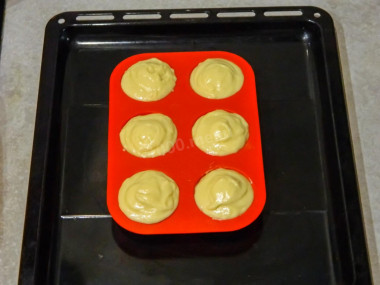
Top carefully, so as not to move the halves, pour a small layer of dough to just cover the filling. Bake for about 30 minutes on the middle shelf of the oven at 180 degrees. Keep in mind that the cooking time depends on your oven and the size of the molds. The finished cupcakes will rise and turn red. Taking out of the molds, make a small notch with a knife in the place of the cupcake in which you will need to cut in order to get a smile from an apricot on the slice.
Cupcakes are not sugary, light and airy. Apricot combined with cottage cheese is an excellent filling for cupcakes. And in the form of a smile, it looks simply charming.
6 cupcakes are obtained from the specified number of products. I used a silicone cupcake mold with a size of 6.5x2.5 cm each.
Cupcakes in the recipe - with canned apricots. It's great that such an apricot smile can be baked at least all year round! Canned apricots have enough sweetness for my taste, I don't like too sweet pastries. But if I do it with fresh apricots next time, I'll add a little more sugar to the dough, since fresh apricots are usually more acidic. Before you cook the dough, be sure to try fruits, they can taste very different.
When the top layer of baking is slightly browned, check it for readiness: pierce it with a wooden skewer in several places, if the skewer comes out dry, then the mold (or baking sheet) can be taken out of the oven.
Make it a rule that the amount of flour is never determined in advance when preparing flour and bread products! This indicator will always fluctuate, since flour can be of different humidity, differ in the degree of grinding and the level of gluten, and other indicators, which inevitably affects its ability to bind to the liquid mixture in the dough. Since it is impossible to do a laboratory test at home to determine all the parameters and indicators of flour, we recommend acting on the principle of "flour in water", that is, take liquids exactly according to the recipe, and add flour to the liquid component not all at once, but in parts, achieving the desired consistency (while flour may take a little more or on the contrary, less than in the recipe). Thanks to this technique, the proportions of the ingredients are more accurately preserved and the quality of the dough is not lost.
Keep in mind that everyone's ovens are different. The temperature and cooking time may differ from those specified in the recipe. To make any baked dish successful, use useful information about the features of ovens !
Any heat-resistant mold is suitable for this recipe. If you use a silicone mold, then you do not need to smear it with butter or margarine. But it is better to lightly lubricate metal, ceramic or glass dishes with vegetable oil so that the baking does not burn.
Caloric content of the products possible in the composition of the dish
- Acedophilin 3.2% fat content - 58 kcal/100g
- "rastishka " - 122 kcal/100g
- Danone drinking yogurt - 76 kcal/100g
- Drinking yogurt "agusha" - 87 kcal/100g
- "aktimel" natural - 83 kcal/100g
- Danone yogurt with 2.2% fat content - 96 kcal/100g
- "mazhetel" - 48 kcal/100g
- Ermann fat yogurt - 152 kcal/100g
- Yogurt with 3.5% fat content - 68 kcal/100g
- Natural yogurt with 1.5% fat content - 48 kcal/100g
- Low-fat milk yogurt - 38 kcal/100g
- Cottage cheese of 40% fat content - 466 kcal/100g
- Cottage cheese of 20% fat content - 233 kcal/100g
- Cottage cheese of 18% fat content - 226 kcal/100g
- Cottage cheese of 10% fat content - 156 kcal/100g
- Low-fat cottage cheese - 75 kcal/100g
- Cottage cheese with sour cream - 260 kcal/100g
- Fruit cottage cheese - 147 kcal/100g
- Soft dietary cottage cheese - 170 kcal/100g
- Vitalinia cottage cheese - 64 kcal/100g
- Cottage cheese "morning" ( "danone") without sugar - 91 kcal/100g
- Cottage cheese - 156 kcal/100g
- Granulated sugar - 398 kcal/100g
- Sugar - 398 kcal/100g
- Apricots - 46 kcal/100g
- Canned apricots - 50 kcal/100g
- Starch - 320 kcal/100g
- Vegetable oil - 873 kcal/100g
- Salt - 0 kcal/100g
- Wheat flour - 325 kcal/100g
- Baking powder - 79 kcal/100g
- Powdered sugar - 374 kcal/100g
- Vanilla sugar - 379 kcal/100g
- Chicken egg - 80 kcal/100g


